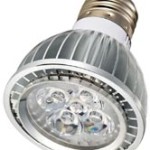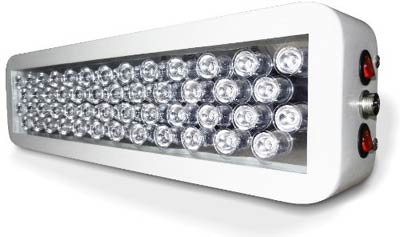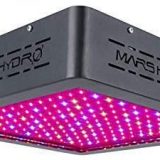What to Consider while Choosing LED Grow Lights?
 LED grow lights have become a boon especially for those areas which receive less sunlight. Besides substituting sunlight, LED grow lights have some distinct benefits like incredibly long lifetime, ability to create the best environment for plants to thrive well with targeted wavelengths, energy efficiency, and more. Full spectrum grow lights are thus extremely useful for urban gardening. But with so many of them available in the market, how to choose the right one for your garden? Let’s see.
LED grow lights have become a boon especially for those areas which receive less sunlight. Besides substituting sunlight, LED grow lights have some distinct benefits like incredibly long lifetime, ability to create the best environment for plants to thrive well with targeted wavelengths, energy efficiency, and more. Full spectrum grow lights are thus extremely useful for urban gardening. But with so many of them available in the market, how to choose the right one for your garden? Let’s see.
Customizable Output Spectrum
Look for a customizable output spectrum while choosing a LED grow light, i.e. the light should provide individual brightness control for every color of LEDs. By changing the output power of every color, the gardener can imitate seasonal light variations for a growing cycle lasting for multiple weeks. For example, more red light imitates the fall sunlight (flowering phase), while more blue light mimics the sunlight in summer (vegetative phase). Such a spectrum variation is similar to the result achieved by beginning growing plants under MH lamps for vegetative phase and then changing the light to HPS for flowering phase. So, adjustable LEDs are a lot more convenient. You can then also customize the light spectrum to match individual plant type.
High-power Cooling System
Same as the CPU in a computer, LEDs need to be cooled with a fan and heat sink. Since high-power LEDs don’t emit any heat, the metal pad is the only path through which heat can leave the LEDs. The flow of the heat runs from the LED die, via the metal slug and circuit board, in a heat sink and then out in the air.
Seek LEDs fitted on a metal core printed circuit board (MCPCB). This is a technology designed for operating electronics in a high heat. It conducts several hundreds of times more heat than a usual fiberglass circuit board. Also make sure that the MCPCB is fitted on a large heat sink, especially the one having many fins. Multiple fins provide a larger surface area to scatter heat in the ambient air. Multiple fans eliminate the failure of the system due to a single-fan failure which can damage the LEDs. The datasheet of the light should have the predicted lifetime of the fan.
Constant Current Driver Circuit
Another important feature to consider while choosing LED lights is the electronic circuit that powers the LEDs. This is like HID ballast. The AC input power is converted by the circuit into DC power to at a desired voltage and level of current for the LEDs. To supply a constant DC current even upon a change in the LED voltage over time and temperature is its most important job.
Several simple driver circuits supply a constant voltage, which means the output current changes with the LED voltage. Early LED failure can occur due to constant-voltage driver. As the temperature of the LED increases, voltage decreases making a constant-voltage driver to provide more current to counterbalance the dropped LED voltage. This resultant loop creates a runaway current that damages the LED.
Good LED driver circuits provide a continuous DC current, staying steady as the LED voltage varies with temperature. The words “constant-current” should be there in the specification of the LED driver.
Find through information about LED full spectrum grow lights on MadAboutBerries.com/articles/full-spectrum-led-grow-lights.html. Here you will also find comparison of the top LED grow lights on the market which will help you to take an educated decision. The images in this article are their courtesy.














